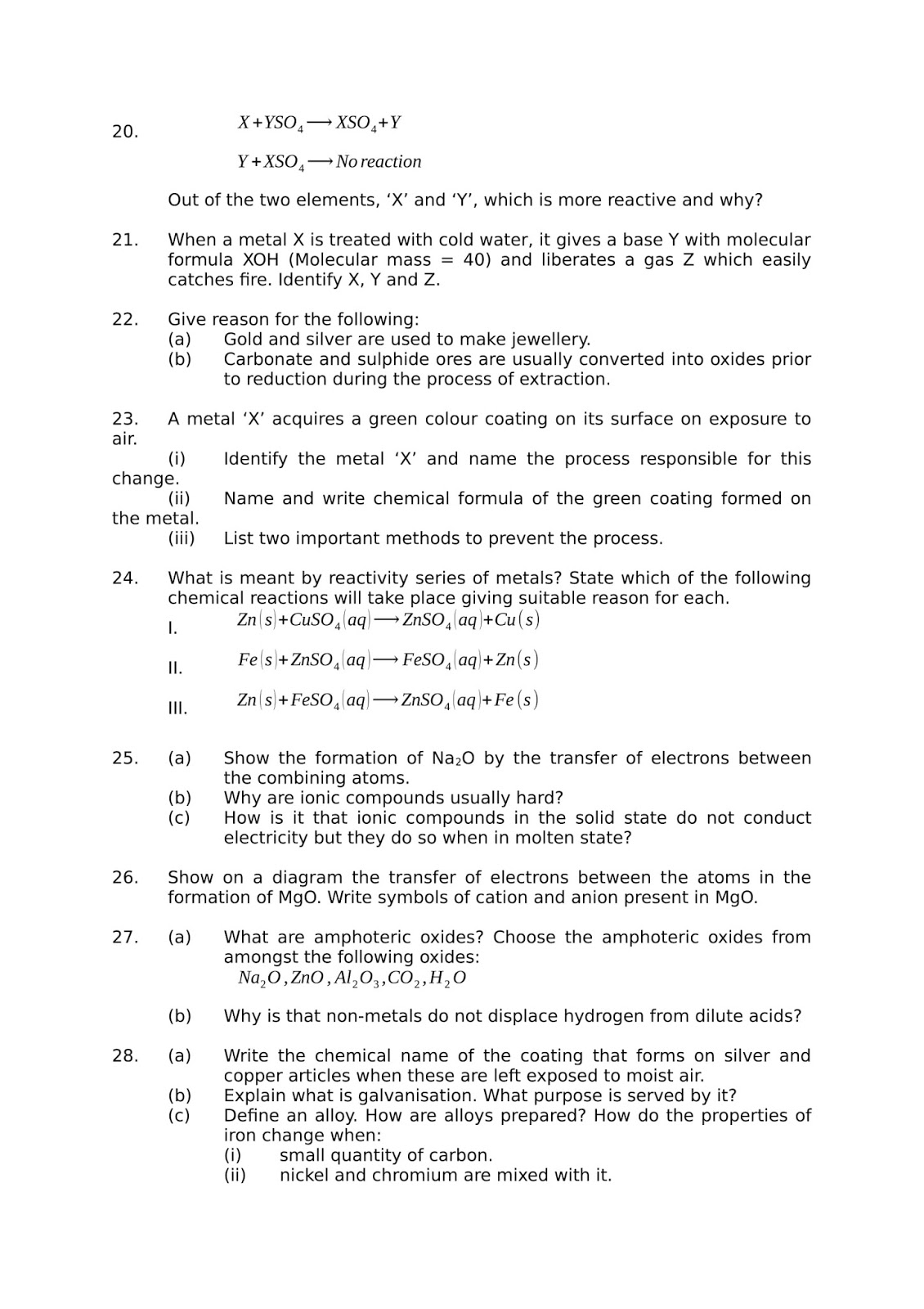PRACTICE PAPER
1.
What is Tyndall effect? Why the solution of copper sulphate does not show
Tyndall effect?
2. A sample
of water under study was found to boil at 102°C at normal temperature and
pressure. Is the water pure? Will this water freeze at 0°C? Comment.
3. Water as
ice has a cooling effect, whereas water as steam may cause severe burns.
Explain these observations.
4. 5ml of dettol
is added to a beaker containing 500 ml of water and stirred.State any two
observations that you make.
(a) Swelling up of a raisin on
keeping in water.
(b) Spreading of virus on sneezing.
(c) Earthworm dying on coming in
contact with common salt.
(d) Shrinking of grapes kept in
thick sugar syrup.
(e) Preserving pickles in salt.
6. Alka was making
tea in a kettle. Suddenly she felt intense heat from the puff of steam gushing
out of the spout of the kettle. She wondered whether the temperature of the
steam was higher than that of the water boiling in the kettle. Comment.
7. Answer the
following:
a) Under which category of mixtures will you classify
alloys and why?
b)
A solution is always a liquid. Comment.
c)
Can a solution be heterogeneous?
8. Iron
filings and sulphur were mixed together and divided into two parts, ‘A’ and
‘B’. Part ‘A’ was heated strongly while Part ‘B’ was not heated. Dilute
hydrochloric acid was added to both the Parts and evolution of gas was seen in
both the cases. How will you identify the gases evolved?
9. A child wanted to
separate the mixture of dyes constituting a sample of ink. He marked a line by
the ink on the filter paper and placed the filter paper in a glass containing
water as shown in Fig. 2.3. The filter paper was removed when the water moved near
the top of the filter paper.
a). What would you expect to see, if
the ink contains three different coloured components?
b). Name the technique used by the child.
c). Suggest one more application of
this technique.

10. Classify each of
the following, as a physical or a chemical change. Give reasons.
(a)
Drying of a shirt in the sun.
(b) Rising of hot air over a radiator.
(c)
Burning of kerosene in a lantern.
(d)
Change in the colour of black tea on adding lemon juice to it.
(e)
Churning of milk cream to get butter.
11.
During an experiment the students were asked to prepare a 10% (Mass/Mass)
solution of sugar in water. Ramesh dissolved 10g of sugar in 100g of water
while Sarika prepared it by dissolving 10g of sugar in water to make 100g of
the solution.
(a)
Are the two solutions of the same concentration
(b)
Compare the mass % of the two solutions.
12. You are provided with a mixture containing
sand, iron filings, ammonium chloride and sodium chloride. Describe the
procedures you would use to separate these constituents from the mixture?
13. While
diluting a solution of salt in water, a student by mistake added acetone
(boiling point
56°C). What technique can be employed to get back the acetone? Justify your
choice.
14. What would you observe when
(a)
a saturated solution of potassium chloride prepared at 60°C is allowed to
cool to room temperature.
(b)
an aqueous sugar solution is heated to dryness.
(c)
a mixture of iron filings and sulphur powder is heated strongly.
15. Explain
why particles of a colloidal solution do not settle down when left undisturbed,
while in the case of a suspension they do.
16. (b)
You are given two substances ‘X’ AND ‘Y’ .One of these is pure water and
another is impure. How will you identify which one is pure water?
17. Smoke and fog both are aerosols. In what way are they different?
18. You are
given two samples of water labelled as ‘A’ and ‘B’. Sample ‘A’ boils at 100°C
and sample ‘B’ boils at 102°C. Which sample of water will not freeze at 0°C?
Comment.
19. An
element is sonorous and highly ductile. Under which category would you classify
this element? What other characteristics do you expect the element to possess?
20. Give an example each for the mixture having the following
characteristics. Suggest
a suitable method to separate the components of these mixtures
(a)
A volatile and a
non-volatile component.
(b)
Two volatile
components with appreciable difference in boiling points.
(c)
Two immiscible
liquids.
21. Which of the following are not compounds?
(a)
Chlorine gas
(b) Potassium chloride
(c) Iron
(d) Iron sulphide
(e) Aluminium
(f)
Iodine
(g) Carbon
(h) Carbon monoxide
(i) Sulphur powder
22.
Give some examples of Tyndall effect
observed in your surroundings?
23. Osmosis is a special kind of
diffusion’. Comment.
24. (a) List two important precautions a
student should take while determining the melting point of ice?
(b) A student prepared three solutions-(i)
Copper sulphate in water (ii) soil in water (iii) milk in water. Distinguish
between the three based on their particle size and stability.
25. In which of the following substances you
expect strongest and the weakest force of attraction between the particles .Give reason for your
answer
Water, Sodium chloride, Carbondioxide




